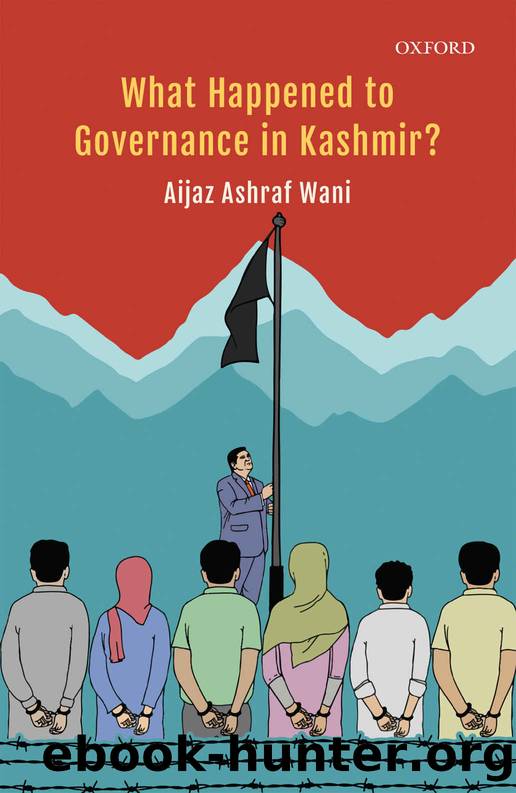What Happened to Governance in Kashmir? by Wani Aijaz Ashraf

Author:Wani, Aijaz Ashraf [Wani, Aijaz Ashraf]
Language: eng
Format: epub
ISBN: 978-0-19-909715-9
Publisher: OUP India
Published: 2018-12-14T16:00:00+00:00
4
A Difference in Degree (1964â75)
History repeated itself in 1963. Bakhshi was shown the door; not, however, through the type of coup dâétat which threw Abdullah out of power in 1953, but through a gimmick, using the facade of the Kamraj Plan. The cause behind the removal of both these first two prime ministers was, nevertheless, the same: Nehruâs hunger to swallow up Kashmir. Like Abdullah, Bakhshi resisted the insatiate hunger of Delhi to make Kashmir like any other state of India. Clearly, Bakhshi was installed as prime minister only when the Indian government satisfied itself that he would be forthcoming regarding its plan of gradual merger of the state with the Indian Union. And for the same purpose it stood behind him through thick and thin. He kept his word, and rendered the prey half-dead. Article 370 giving Kashmir a special position was considerably eroded, as we have seen in the preceding chapter. Nonetheless, Bakhshi refused to bleed the state to death. He resisted the moves to change the nomenclature of prime minister to chief minister and sadr-i-riyasat to governor. He also declined to merge the National Conference into the Indian National Congress. 1 This was not acceptable to Nehru, and he employed the method of embarrassing Bakhshi and encouraging the rival group in the National Conference, headed by G. M. Sadiq. Mir Qasim, who was one of the important members of the rival group, spoke the truth (though in the late stages of his life) about Indian diplomacy towards Kashmir:
whenever New Delhi feels a leader in Kashmir is getting too big for his shoes, it employs Machiavellian methods to cut him to size. This it does by projecting a lesser leader as an alternative with the help of a two-way overt or covert campaignâone, by convincing the targeted leader that his position was unassailable and the lesser leader was conspiring against him; and second, by telling the lesser one that he was more popular than the main leader who had outlived his utility. Tale-tellers, of whose black art one heard in Mughal courts, play a major role in this kind of conspiracy. 2
Download
This site does not store any files on its server. We only index and link to content provided by other sites. Please contact the content providers to delete copyright contents if any and email us, we'll remove relevant links or contents immediately.
| Automotive | Engineering |
| Transportation |
Machine Learning at Scale with H2O by Gregory Keys | David Whiting(3621)
Never by Ken Follett(3524)
Urban Outlaw by Magnus Walker(3242)
OPNsense Beginner to Professional by Julio Cesar Bueno de Camargo(3195)
Sapiens and Homo Deus by Yuval Noah Harari(2843)
Will by Will Smith(2579)
A Short History of Nearly Everything by Bryson Bill(2508)
Hooked: A Dark, Contemporary Romance (Never After Series) by Emily McIntire(2420)
Rationality by Steven Pinker(2148)
Borders by unknow(2117)
Holy Bible (NIV) by Zondervan(2026)
The Becoming by Nora Roberts(1915)
Freedom by Sonny Barger(1717)
The One Percenter Encyclopedia by Bill Hayes(1717)
HBR's 10 Must Reads 2022 by Harvard Business Review(1696)
A Short History of War by Jeremy Black(1668)
Five Ways to Fall by K.A. Tucker(1634)
Girls Auto Clinic Glove Box Guide by Patrice Banks(1619)
Go Tell the Bees That I Am Gone by Diana Gabaldon(1598)
